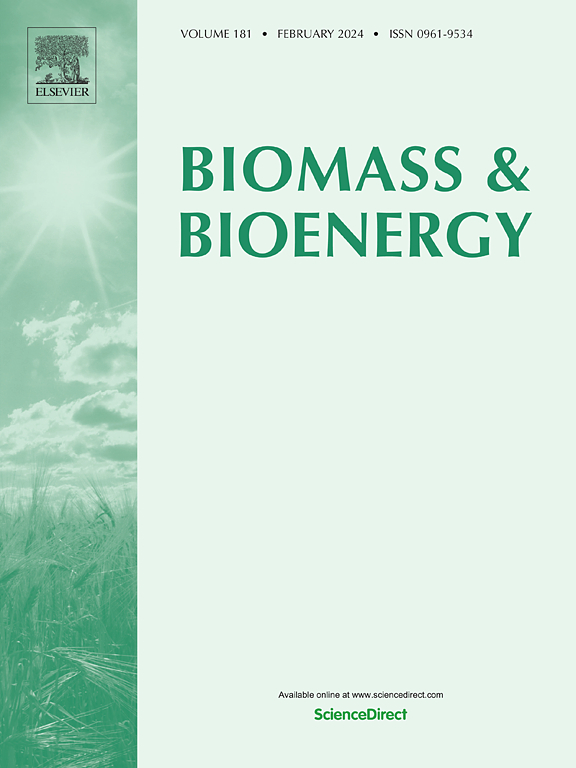Prediction of activation energy of lignocellulosic biomass pyrolysis through thermogravimetry-assisted machine learning
IF 5.8
2区 生物学
Q1 AGRICULTURAL ENGINEERING
引用次数: 0
Abstract
Activation energy is a crucial indicator to explain the pyrolysis process of lignocellulosic biomass that can be converted into clean fuels and high-value-added chemicals. The present work employs machine learning algorithms to explore the hidden correlations between feedstock characteristics, thermogravimetry performance, reaction kinetic equation, and activation energy, which allows these kinetic parameters to be obtained without the Arrhenius equation. Bayesian optimization improves the Gradient boosting decision tree model performance: MSE of 198.67, R2 of 0.991. Feature importance analysis and partial dependence analysis show that feedstocks with high lignin content and low nitrogen and oxygen content usually have higher activation energy. Meanwhile, the temperature when the mass is reduced to 80% of the initial mass during the thermogravimetry process plays a very important role in activation energy. The results show that the machine learning model can accurately learn the relationship between thermogravimetry curve characteristics and activation energy, so it can accurately predict the activation energy of lignocellulosic biomass pyrolysis. This approach can potentially save time and effort that would otherwise be spent on tedious calculations required by kinetic reaction equations. Additionally, it can provide useful guidance for experimental studies.

求助全文
约1分钟内获得全文
求助全文
来源期刊

Biomass & Bioenergy
工程技术-能源与燃料
CiteScore
11.50
自引率
3.30%
发文量
258
审稿时长
60 days
期刊介绍:
Biomass & Bioenergy is an international journal publishing original research papers and short communications, review articles and case studies on biological resources, chemical and biological processes, and biomass products for new renewable sources of energy and materials.
The scope of the journal extends to the environmental, management and economic aspects of biomass and bioenergy.
Key areas covered by the journal:
• Biomass: sources, energy crop production processes, genetic improvements, composition. Please note that research on these biomass subjects must be linked directly to bioenergy generation.
• Biological Residues: residues/rests from agricultural production, forestry and plantations (palm, sugar etc), processing industries, and municipal sources (MSW). Papers on the use of biomass residues through innovative processes/technological novelty and/or consideration of feedstock/system sustainability (or unsustainability) are welcomed. However waste treatment processes and pollution control or mitigation which are only tangentially related to bioenergy are not in the scope of the journal, as they are more suited to publications in the environmental arena. Papers that describe conventional waste streams (ie well described in existing literature) that do not empirically address ''new'' added value from the process are not suitable for submission to the journal.
• Bioenergy Processes: fermentations, thermochemical conversions, liquid and gaseous fuels, and petrochemical substitutes
• Bioenergy Utilization: direct combustion, gasification, electricity production, chemical processes, and by-product remediation
• Biomass and the Environment: carbon cycle, the net energy efficiency of bioenergy systems, assessment of sustainability, and biodiversity issues.
 求助内容:
求助内容: 应助结果提醒方式:
应助结果提醒方式:


